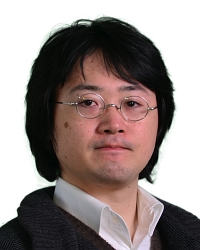TR2020-051
Huffman-coded Sphere Shaping and Distribution Matching Algorithms via Lookup Tables
-
- , "Huffman-coded Sphere Shaping and Distribution Matching Algorithms via Lookup Tables", IEEE Journal of Lightwave Technology, DOI: 10.1109/JLT.2020.2987210, Vol. 38, No. 10, pp. 2825-2833, April 2020.BibTeX TR2020-051 PDF
- @article{Fehenberger2020apr2,
- author = {Fehenberger, Tobias and Millar, David S. and Koike-Akino, Toshiaki and Kojima, Keisuke and Parsons, Kieran and Griesser, Helmut},
- title = {{Huffman-coded Sphere Shaping and Distribution Matching Algorithms via Lookup Tables}},
- journal = {IEEE Journal of Lightwave Technology},
- year = 2020,
- volume = 38,
- number = 10,
- pages = {2825--2833},
- month = apr,
- doi = {10.1109/JLT.2020.2987210},
- issn = {1558-2213},
- url = {https://www.merl.com/publications/TR2020-051}
- }
- , "Huffman-coded Sphere Shaping and Distribution Matching Algorithms via Lookup Tables", IEEE Journal of Lightwave Technology, DOI: 10.1109/JLT.2020.2987210, Vol. 38, No. 10, pp. 2825-2833, April 2020.
-
MERL Contacts:
-
Research Areas:
Communications, Electronic and Photonic Devices, Optimization, Signal Processing
Abstract:
In this paper, we study amplitude shaping schemes for the probabilistic amplitude shaping (PAS) framework as well as algorithms for constant-composition distribution matching (CCDM). Huffman-coded sphere shaping (HCSS) is discussed in detail, which internally uses Huffman coding to determine the composition to be used and relies on conventional CCDM algorithms for mapping and demapping. Numerical simulations show that HCSS closes the performance gap between distribution matching schemes and sphere shaping techniques such as enumerative sphere shaping (ESS). HCSS is based on an architecture that is different from the trellis-based setup of ESS and that allows to tailor the used HCSS compositions to the transmission channel as well as complexity constraints. We further discuss in detail multiset ranking (MR) and subset ranking (SR) as alternatives to arithmetic-coding (AC) CCDM. The advantage of MR over AC is that it requires less sequential operations for mapping. SR operates on binary alphabets only, which can introduce some additional rate loss as a nonbinary-tobinary transformation can be required. However, the binomial coefficients required for SR can be precomputed and stored in a lookup table. We perform an analysis of rate loss and decoding performance of the proposed techniques and compare them to other prominent amplitude shaping schemes. For medium to long block lengths, MR-HCSS and SR-HCSS are shown to have similar performance to ESS, while using a very different architecture that allows the design to be tailored to the channel. SR-HCSS and uniform 64QAM are compared in additive white Gaussian noise (AWGN) simulations and shaping gains of 0.5 dB and 1 dB are demonstrated with 1 kbit and 100 kbit LUT size, respectively.

